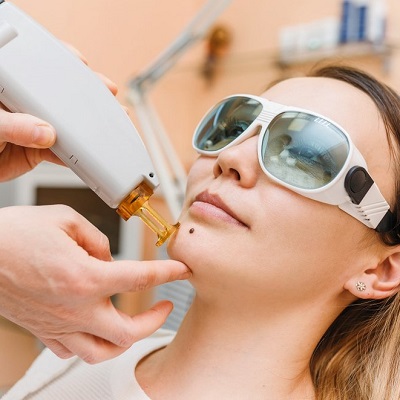
Common skin growths called moles often cause people anxiety when they think about having them removed. However, you must know about the nature of such moles and the available procedures to consider them safely. Similarly, you should also know what risks are attached to the surgery, its benefits, and all related things. We will explore mole kinds, traits, typical removal techniques, and factors to consider when selecting the best procedure. Therefore, in this extensive guide, you will also read about post-removal care and when to see a dermatologist. So, explore the mole dilemma and choose the right removal method in this blog.
Recognizing Moles, Types and Features:
A mole, also known as a naevus, is a tiny, round, brown skin lesion that usually has an oval or rounded form. Typically found in the skin or mucous membranes, moles are masses of colored cells with a brown color. These cells, sometimes called melanocytes, are responsible for tanning or dark skin. Melanocytes in the skin cluster together rather than disperse, resulting in moles.
In addition, sun exposure throughout childhood and adolescence affects the quantity and size of moles that might develop on the skin. Between six months and a year, common moles start showing up, and they do so until maturity. While most moles are gentle, some might develop into malignancy.
Ways To Verify Your Moles:
Early detection of worrisome moles is crucial for having a good prognosis for skin cancer. Watching for new and old moles on your skin is critical, as a survey revealed that 70% of melanomas originated from them.
Examine your moles in a well-lit space. Therefore, you may inspect moles on your body using items like a hair dryer, chair, full-length mirror, and hand mirror.
Types And Features of Moles:
- There are three types of moles.
- Congenital Moles:
A congenital mole develops either during the first few months of life or is present from birth. Usually brown or black, these moles may grow quite enormous. Congenital moles are usually benign at birth. However, big ones can have a modest increased chance of developing into cancer later in life.
- Common Moles – Acquired Moles:
The majority of moles are of the acquired kind, which are those that occur after birth. Therefore, “acquired moles” and “acquired nevi” refer to raised or flat, pink, brown, or black lesions. These moles are usually uniformly colored and have a diameter of less than a centimeter. The quantity of solar exposure and an individual’s genetic makeup determines how many moles they will get in their lifetime.
- Dysplastic Moles – Atypical Moles:
Atypical moles have an odd appearance and exhibit size, color, form, or edge irregularities. Although these moles might not seem harmful, they need monitoring since atypical moles are more likely to develop into melanomas.
When to Take Notice of Mole Dilemma
- Variations in size, shape, or color.
- Uneven perimeters or boundaries.
- She was crying, stinging, or bleeding.
- Quick expansion.
Typical Mole Removal Techniques:
- Excision Surgery: The dermatologist cuts the mole and closes the incision with sutures. This type of technique is ideal for unusual or elevated moles. It offers a thorough removal. The patient can have a little scar.
- Laser Removal: In this process, the laser breaks the mole’s pigment. Further, it is fit for small moles that are not malignant. It is less scary. The patient may need multiple sessions for this procedure.
- Cryoprotection: In this procedure, dermatologists use liquid nitrogen to freeze off the mole. It is ideal for skin tags and smaller moles. It is a simple process and can shift the pigmentation from it.
- Electrosurgical Techniques: In this process, electrical current is used to cut or burn the mole. It is a short process with less scarring. The patient may feel a little pain.
- Topical Creams: There are many over-the-counter creams to treat moles. The dermatologists prescribe these specific categories of moles after assessing the mole’s nature. It is a non-invasive process. It is a long-term process that needs consistency.
Conclusion:
In conclusion, removing a mole requires careful consideration of several things. Through comprehension of mole kinds and investigation of the advantages and disadvantages of removal techniques, people may make well-informed decisions for a seamless and efficient result. Recall that seeking advice from a dermatologist is always a prudent move toward guaranteeing the finest treatment for your skin.
For mole removal, Dynamic Clinic Islamabad is the right choice for everyone having this issue and wants to remove there moles.


